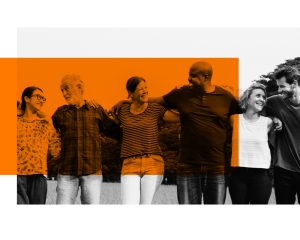A Q/A with Josh Schoeller, CEO, Health Care business of LexisNexis® Risk Solutions
Q: The healthcare industry has widely acknowledged that the more we understand a patient’s unique healthcare journey the greater the chance we have at a positive health outcome. How does that concept tie in to real-word data (RWD)?
A: RWD can provide a more holistic view of a patient’s health, but today’s RWD is incomplete, often restricted to only a fraction of a patient’s story.To realize the full potential of RWD, we must put the patient at the center and truly understand each patient’s unique circumstances over time. It’s certainly a tall order when the data we need is scattered across siloed systems and guarded by applicable and necessary patient privacy regulations.
Q: What challenges do you see in the industry’s current ability to link datasets and create that comprehensive view of health?
A: For the last 20 years or so, we’ve been aggregating disparate de-identified datasets leveraging programs using various crypto hash tokenization processes. However, this legacy tokenization technology uses probabilistic and deterministic matching based on the presented Personal Identifiable Information (PII). But because of the variation in PII over time, it lacks precision which is critical for RWD applications.This legacy tokenization process for data aggregation is fine for the historical commercial sales and marketing applications, but when it comes to clinical research and studying optimal health outcomes, patient longitudinal precision is essential. This is why we embarked on developing LexisNexis® Gravitas™, a revolutionary next-generation token leveraging a referential data layer to securely enable the creation of de-identified datasets with unparalleled accuracy.
Q: How does LexisNexis Gravitas link datasets with precision while adhering to security and patient privacy regulations?
A: For half a century, LexisNexis Risk Solutions has been in the business of using data for good. Preserving data security and privacy is the foundational principle on which our business was built. We enable data and analytic solutions that drive new insights to improve our society and, in this case, healthcare.With that legacy in mind, we developed a HIPAA-compliant way to link de-identified datasets, unlocking a new era of RWD. Beyond meeting expert determination requirements, we require all users of our regulated data to register their permitted use. This enables us to monitor downstream use cases and verify their compliance.
Q: What types of data are you linking together with Gravitas and what are some potential use cases?
A: With the Gravitas™ Token, we can link a wide range of de-identified datasets like social determinants of health data (SDoH), mortality data, medical claims data, and more to create a more holistic and longitudinal view of a patient’s story. This combination of clinical and non-clinical records opens the door to generate real-world evidence (RWE) for more impactful and inclusive research leading towards improved patient outcomes and more equitable access to care.
The use cases are limitless, but let’s start with clinical research. One of the biggest challenges with bringing new therapies and treatments to market is ensuring they’re safe. To do so, researchers need to conduct multiple phases of clinical studies and meet the FDA’s rigorous approval processes with statistically significant results. If we combine the right sets of data to follow up on the initial approval, we have an opportunity to shorten the cycle by weeks, months, maybe even years
Another application of RWD is comparator arms or historic best practice treatments. Think of the lives that could be saved if we can quickly aggregate the datasets needed to complete clinical trials and expedite the development of therapies. You can apply this to new diseases like COVID-19 but also diseases that have been around for decades like lupus and diabetes.
Beyond clinical research, longitudinal patient datasets are also very effective for hospital systems. We’re moving to a value-based care system, and everybody wants to create healthier communities. To better benchmark their practices and outcomes and to have the ability to study larger cohorts, hospitals need to integrate data beyond what’s in their own electronic health records.
Q: Are you combining datasets from within your business or are you looking for data partners to link additional datasets?
A: Both. We have very powerful and unique data assets, but we know there are other data assets on the market, including genomics, lab, wearables, rural and community health. Combining these assets with our core data will grow the overall value and potential of this data exponentially. This is where the Gravitas Network comes into focus. It’s a fully interoperable data platform comprised of high-quality datasets from a range of strategic data partners.
Other networks on the market seem to believe that the more data they offer the better. We’re taking a different approach. We really want to look at this through a very clinical lens. We want data partners that truly will help answer more clinical questions and help create healthier communities. It is not about more; it’s about having the best quality and curating the right partners who not only add their data but also help contextualize the data. All of this requires precise data linking across on-going changes in name, address, provider and insurer, which is the underpinning value proposition of Gravitas.
Q: What are you most excited about with Gravitas?
A: LexisNexis Gravitas represents a pivotal opportunity for RWD and the healthcare industry. With the Gravitas Token, we can create more diverse cohorts that can help us better understand health disparities and improve health equity. It will take the idea of using data for good to a whole new level by empowering researchers and clinicians to improve patient outcomes.
The combination of data partners, core data sets, and next-generation tokenization technology will pave the way to a new era of truly patient-centric RWD that enables more impactful research and more equitable access to care, further enabling what we all deserve – better health.





